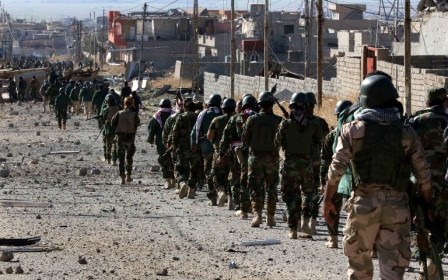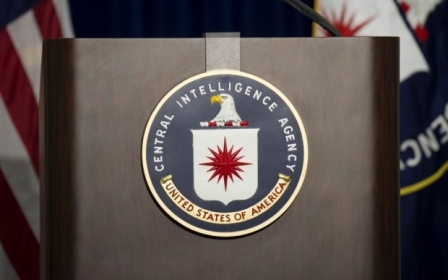US commandos capture head of IS chemical weapons unit

US special forces have captured the head of the Islamic State (IS) group's chemical weapons division in a raid in northern Iraq last month, according to US and Iraqi sources.
The Associated Press news agency on Wednesday quoted senior Iraqi officials as saying that Sleiman Daoud al-Afari, a former expert in Saddam Hussein's chemical and biological weapons division, was captured near Tal Afar.
The New York Times separately quoted anonymous US defence officials as saying that Afari was being interrogated at a site in Erbil, in the autonomous Kurdish region of Iraq, which the Red Cross had visited.
Afari capture came shortly after the arrival in Iraq of a new unit of "Delta Force" commandos charged with capturing high-level IS leaders. The unit is the first major American combat force on the ground there since the US pulled out of Iraq in 2011.
According to the Times, the captive has provided details about how the group weaponised mustard sulfur agent into powdered form, and loaded it into artillery shells. The agent was not concentrated enough to kill anyone, but it could sicken, the Times said.
The reports of Afari's capture come days after Middle East Eye reported that IS was developing an arsenal of homemade, chemical-laden rockets that have been fired at Kurdish and Iraqi forces in Sinjar, a town recently liberated from the group.
In one attack on 25 February, 175 Peshmerga fighters were treated for the effects of gas released by "Katyusha"-style rockets fired at their base. Witnesses said 19 rockets fell in total. Their contents is still being analysed but the effects were consistent with blistering agents such as chlorine or mustard gas.
"At first, we felt nothing, we just noticed an unpleasant smell. But after a few hours we began to feel unwell and started to vomit," said Ahmed Musa, an Iraqi policeman.
The Organisation for the Prohibition of Chemical Weapons, the UN's chemical weapons watchdog, reported that IS had used mustard gas in an attack in Aleppo, Syria, last August, which killed a baby and sickened one other person.
The watchdog's report concluded "with the utmost confidence that at least two people were exposed to sulfur mustard".
The reported capture of Afari is the result of a new push to target IS chemical weapons sites with airstrikes and raids over the past two months, Iraqi intelligence officials and a western security official in Baghdad told the AP news agency.
US forces have also sought to either capture or kill IS leaders. On Tuesday, the US military said it had "likely killed" the IS military commander Omar al-Shishani in an air strike in Syria. The death has not been confirmed by IS.
IS has been making a determined effort to develop chemical agents, Iraqi and US officials have said, and is believed to have set up a research unit, made up principally of Iraqi scientists from the Saddam era.
However, as reported by MEE, coalition air forces have been largely unsuccessful in finding the low-tech weapons it produces, which are small and can be hidden and moved with ease.
The crude results of the IS programme have been nothing more than "symbolic", according to Dan Kaszeta, a former US army chemical officer and Department of Homeland Security expert who is now a private consultant.
“Furthermore, the chemicals we are talking about are principally chlorine and sulfur mustard, both of which are actually quite poor weapons by modern standards,” he told AP.
Middle East Eye propose une couverture et une analyse indépendantes et incomparables du Moyen-Orient, de l’Afrique du Nord et d’autres régions du monde. Pour en savoir plus sur la reprise de ce contenu et les frais qui s’appliquent, veuillez remplir ce formulaire [en anglais]. Pour en savoir plus sur MEE, cliquez ici [en anglais].




